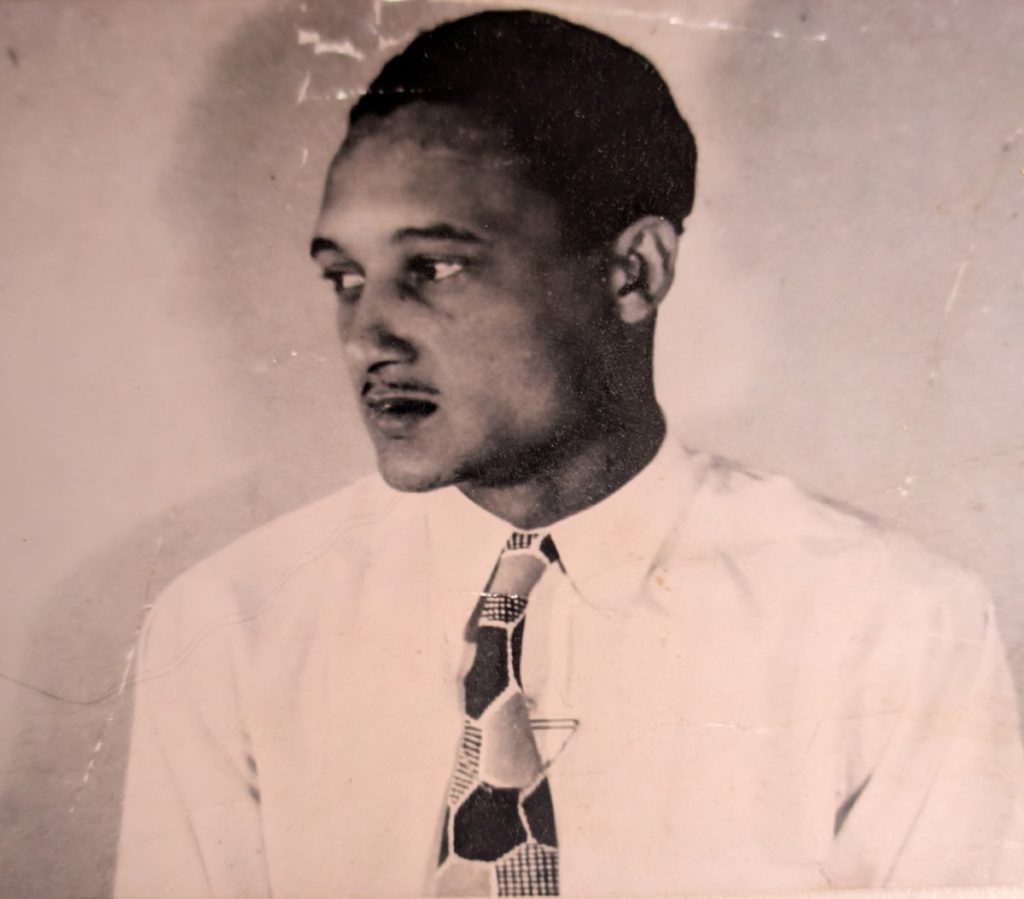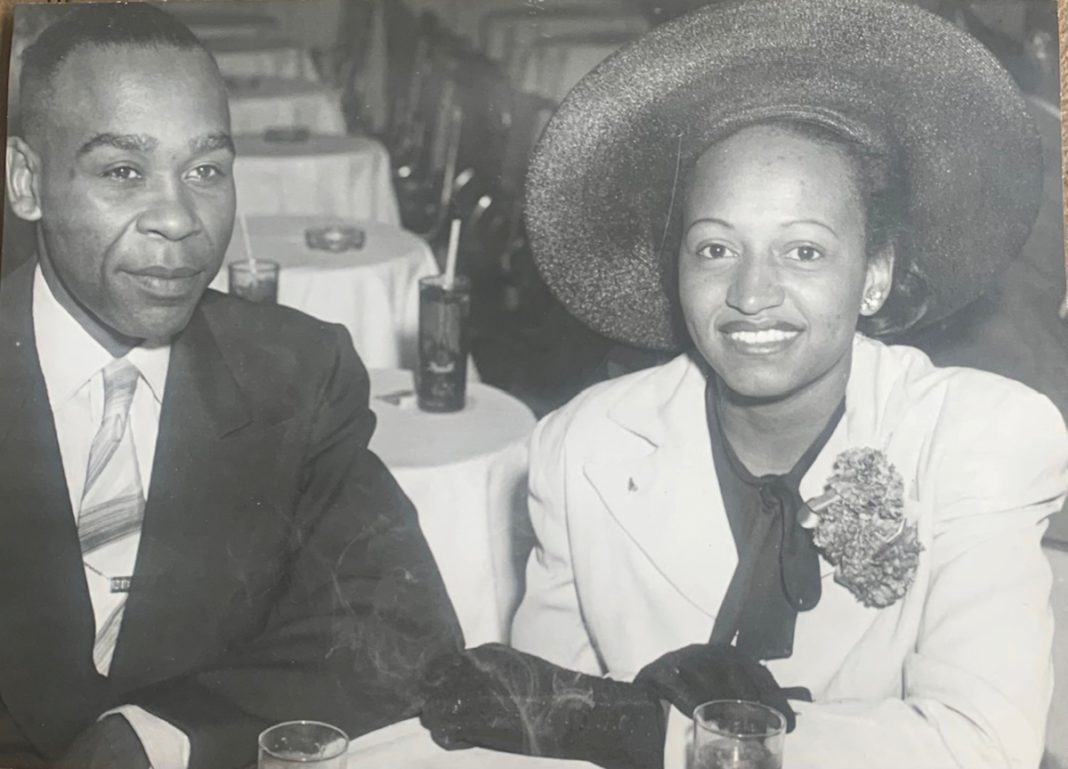The first Black people arrived in Marin City 83 years ago, on Aug. 13, 1942, recruited from across the country to fill jobs at a new Sausalito shipyard building World War II cargo ships.
They hopped into automobiles and boarded buses and trains, some traveling for days, to reach the small town on Richardson Bay. The patriots were eager to help the American war effort and to earn a competitive wage.
These unsung heroes helped the United States win the war.
On Aug. 13, the Marin City Historical & Preservation Society will honor the contributions of the Black men and women who came to build ships for the war effort and also ended up building an enduring diverse community. The celebration includes the unveiling of legacy banners featuring some of the Black workers, interviews with their descendants and a walking tour. A 1945 Greyhound bus and World War II Jeeps will also be on display.
“Primarily we’re telling the story of the Black migration to California in the 1940s,” said Felecia Gaston, director of the Marin City Historical Society. “Many people were living in harsh conditions, working in cotton fields or factories in the South.”
Although Black workers came from other parts of the country too, those from the South were fleeing the dangers of an active Ku Klux Klan and escaping the racist Jim Crow laws, created to segregate Black people. But no matter where their journey West started from, each carried a single suitcase to begin their new life.
“Imagine it,” Gaston said. “What am I going to bring in that one suitcase? They’re going to bring their Bible, a photo of their family and essential clothing. Maybe a guitar or banjo, you know? And they always carried shoebox lunches because Blacks often couldn’t buy food on the train or at bus stops.”
The catalyst of the Black migration to the West Coast was when the Japanese bombed Pearl Harbor on Dec. 7, 1941. The United States officially entered World War II after the attack, and six emergency shipyards sprang up almost overnight in the Bay Area to produce desperately needed ships. One of those shipyards, Marinship, opened on the north end of Sausalito.
In the three and a half years that Marinship operated, it had 75,000 employees. During its peak period, 20,000 people worked around the clock to produce 15 Liberty ships and 78 tankers, all cargo ships to transport supplies and sometimes troops.
The large influx of workers and their families created a problem for Marin County—a housing crisis. Temporary housing was hastily constructed in Marin City, just a stone’s throw from the shipyard. About 6,000 people resided in racially integrated Marin City, with Black and white people living side-by-side, just as they worked shoulder-to-shoulder at Marinship.
Moses Beard, a welder, had a family and was fortunate enough to get a two-bedroom apartment in Marin City soon after he arrived. A Black man from Oklahoma, Beard lived in Denver when the war broke out, according to his oral history recorded by the Sausalito Historical Society. Trained as a welder in a Denver plant, initially Beard planned to go to Marinship with one friend. By the time they left for Sausalito, there were six of them packed into the 1939 Ford.
Describing the dangers of welding, Beard said that burns from sparks were a risk. Although he never suffered a serious burn, Beard and other workers developed temporary vision problems by absorbing radiation from the bright light.
“One of the things we learned to take—just plain potato peels, and put them over your eyes and it draws that burn out,” Beard said.
While Richard Fowler didn’t record an oral history, his daughter, Jackie Fowler Dedrick, spoke to the Pacific Sun to share her memories of growing up in Marin City, where she owns a home today. Her father, from Lake Providence, Louisiana, worked at Marinship as a burner—a specially skilled welder who cut steel plates using a torch.
After moving to Marin City, her mother, Shirley Ann Fowler, originally from Helena, Arkansas, worked as a housekeeper for a Greenbrae family. Neither of Dedrick’s parents liked talking about the past, preferring to leave the difficulties of the Deep South behind them.
“They were bad to Black people in the South,” Dedrick said. “When Black people came out here, it was for a better living. They never mentioned going back.”
Dedrick recalls moving up and down the hill in Marin City, from one home to another as their family grew. The wartime housing went from the flats, where the Marin Gateway Shopping Center is located today, up to the top of Donahue, near the water tower.
“My parents were good, hard-working people,” Dedrick said. “They did amazing work raising six children back in the day of so much racism.”
Leroy Barrow remembers his late father, Elven Barrow, worked at Marinship as a chipper, grinding metal. His father came first, and when Marin City housing was developed, he sent for his family.

Like Dedrick, Leroy Barrow said that his family moved up and down the hill in Marin City, living in five different houses.
“In this community, you knew every family,” Leroy Barrow said. “Nobody locked the doors. During the war period, it was a more diverse population than it was after. In the beginning, white, Black and Filipino. After the war, Marin City became a predominantly Black community.”
Indeed, Marin City’s housing integration ended when the wartime shipyard closed in 1946. Most white people left Marin City with money in their pockets from their well-paying jobs at Marinship. Black people had money, too, but they stayed in Marin City because of redlining, the discriminatory practice of preventing them from buying homes in other areas of the county. Renting outside of Marin City was also next to impossible.
The wartime housing was taken down in the ’50s and ’60s. Golden Gate Village, a federal housing project, and other housing were built for the remaining shipyard workers and their families.
In 1963, Elven Barrow bought a pole house, a home raised high on stilts, in Marin City. His grandson still owns the property today, although he tore down the original house and built a larger one for his family.
Certainly, these courageous men and women improved their standard of living by taking a risk and moving West. And they provided a better life for the next generations.
Today, Marin City is once again a diverse community. The population of about 3,100 is 35% white, 26% Black, 13% Asian and 17% Latinx, according to 2020 data from the United States Census Bureau.
The Marin City Historical & Preservation Society will host an unveiling of Legacy Banners celebrating the Marinship Workers from 1 to 6pm, Wednesday, Aug. 13, on Donahue Street (near the main bus stop), in Marin City. The event is free and open to the public. For more information, visit preservemarincitylegacy.org.












Beautiful stories. My family came to Marin City when I was three years old. We, too, lived all over this valley. I tell people that if the dirt roads and trees could talk, what a story that they could tell!
Today, there is a desire to force Black people out of Marin county, but when God is for you, no one will be able to succeed against you! Just look at our history!
Marin City is such a unique and special community. I’m guessing there are not too many other communities on the West Coast and certainly not Marin County, that a group of residents has so much of their family histories be similar and tied to their neighbors’ histories. Although the percentage of Black residents in Marin City is not what it once was, they are either related or know each other, because four generations have grown up together in this tight knit community. I hope we can continue to document the stories of the elders of this beautiful slice of Marin, so they are not lost forever. The dirt roads and trees can’t tell their stories, but the residents can.